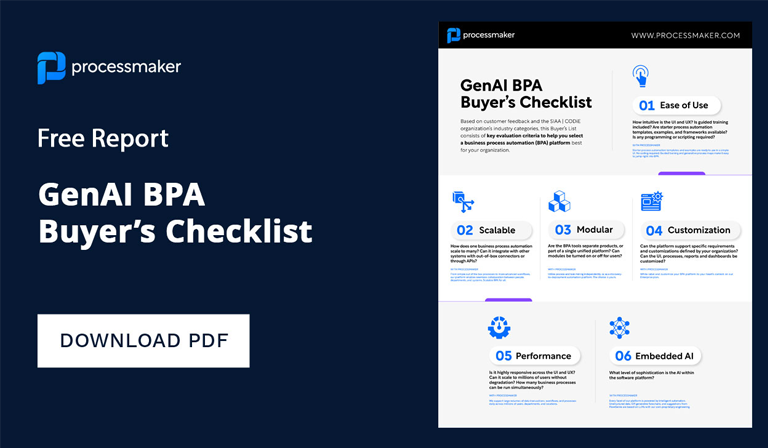The role of treasury has shifted dramatically in recent years from a mere cost center to a profit center. Today’s treasurers are tasked with not only managing risk and liquidity but generating revenues through the efficient management of capital.
To meet these challenges, organizations are increasingly turning to innovative automation technologies to eliminate costly and inefficient manual processes. This allows treasury to spend more time focusing on strategic tasks. Moreover, access to accurate and real-time insights enables data-driven decisions.
The Role of Treasury
Every organization has financial obligations that must be met. The objective of treasury management is to help organizations manage liquidity and mitigate financial risks. In performing these obligations, treasurers perform several critical functions.
- Risk management. Treasury must fully understand risks, manage them appropriately, and find ways to continuously measure and monitor them.
- Liquidity management. Treasury is responsible for optimizing cash resources and maintaining short-term working capital.
- Cash forecasting. Treasury must maintain a structured cash flow forecasting methodology by relying on data to provide insights to management.
- Regulatory change. Financial regulations are dynamic and complex. Treasurers need to stay up to date on the latest regulatory changes and ensure that the organization is in compliance.
These core functions are continuously evolving. More and more workplaces are shifting to some form of remote work. Treasurers must be able to perform their jobs from outside of a traditional office setting. This means eliminating paper-based processes through the adoption of scalable automation technologies.
Automation Trends in Treasury
Accounts Payable
Accounts payable has traditionally been one of the most inefficient treasury processes. Manual treasury processes drive up costs and stifle productivity. For instance, according to the Accounts Payable Association:
- The average cost to process an invoice is between $4 and $10. But in exceptional circumstances, individual and problematic invoices can cost $17.50 or more to process.
- Approximately 3.6% of invoices entered manually include a data entry-related error.
- 56% of organizations experienced cash flow forecasting problems due to accounts payable issues.
- 90% of finance professionals report that they regularly have phone calls from suppliers chasing late payments.
Organizations can go paperless by automating tasks such as invoicing and billing. This means no more printed invoices and bills. Documents are stored electronically and are easily accessible. In addition, automation makes it easy to digitize and streamline collaboration between stakeholders, vendors, clients, and other departments within the organization.
More advanced accounts payable solutions leverage data to monitor fraud or erroneous payments in real-time. A transaction is automatically compared against a client-specific behavior profile. Non-conforming transactions alert employees.
Cloud-based accounts payable automation solutions provide organizations with greater flexibility. Employees can work remotely across devices without the need for costly installation and maintenance. Cloud solutions also tend to be more affordable and let you choose a subscription model that best meets your needs.
Accounts Receivable
The accounts receivable automation market is growing rapidly. Its market size is projected to reach $3 billion by 2024. The growth is not surprising given the rapid decentralization of workforces in recent years. In remote work environments, going into the office to print and send out invoices is not practical.
With automation technologies, digital invoices can be created and sent electronically. Payments can be remitted quickly to improve cash flow. And reminders eliminate the need for employees to chase down payments, allowing them to focus on higher-value tasks.
More advanced treasury automation solutions leverage Machine Learning (ML) and Artificial Intelligence (AI) technologies to ensure accurate billing. For example, matching algorithms can identify patterns by essentially shadowing matching clerks to learn how to apply incoming funds, even when discounts and cross-currency challenges cause payments to differ from the outstanding AR ledger.
Multi-Currency Flows
Multi-currency flows have traditionally presented treasury with several challenges. For instance, the need to obtain competitive pricing and the need for hedging. Manual multi-currency processes involve creating foreign currency journals and translating foreign currencies to domestic rates. This is not only inefficient but can lead to costly errors. An automation solution such as a multi-currency system enables trading in multiple currencies to facilitate buying and selling internationally. Moreover, the system facilitates the recording of revenue and expenses converted from foreign currencies.
Advanced Analytics
One of the biggest advantages of automating treasury processes is the ability to collect and analyze accurate data in real-time. Several core treasury functions have been impacted by recent improvements in data practices and tools.
- Cash forecasting. Advancements in ML and AI allow treasuries to identify cash flow patterns and cyclical variations instead of relying on historical data.
- Market data analysis. Analytics help treasurers prepare for adverse liquidity and market events. For example, by hedging against these events as needed.
- Risk management. Fraud is a major challenge for all organizations. Automation technologies can flag and prevent fraudulent activities.
- Collection. Analytical tools can identify changes in payment behavior. For example, customers whose payments shift from on time to late. Treasurers can use these insights to identify risks and mitigate them, such as reaching out to modify payment terms.
Treasury roles and the business world in which they operate are rapidly evolving. Organizations are increasingly turning to automation technologies to overcome these challenges and to empower their treasury management teams. Organizations located all over the world rely on ProcessMaker’s award-winning banking automation workflow platform to streamline their treasury processes.





